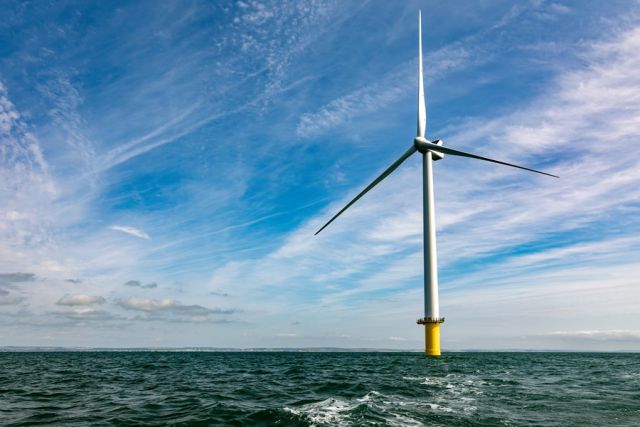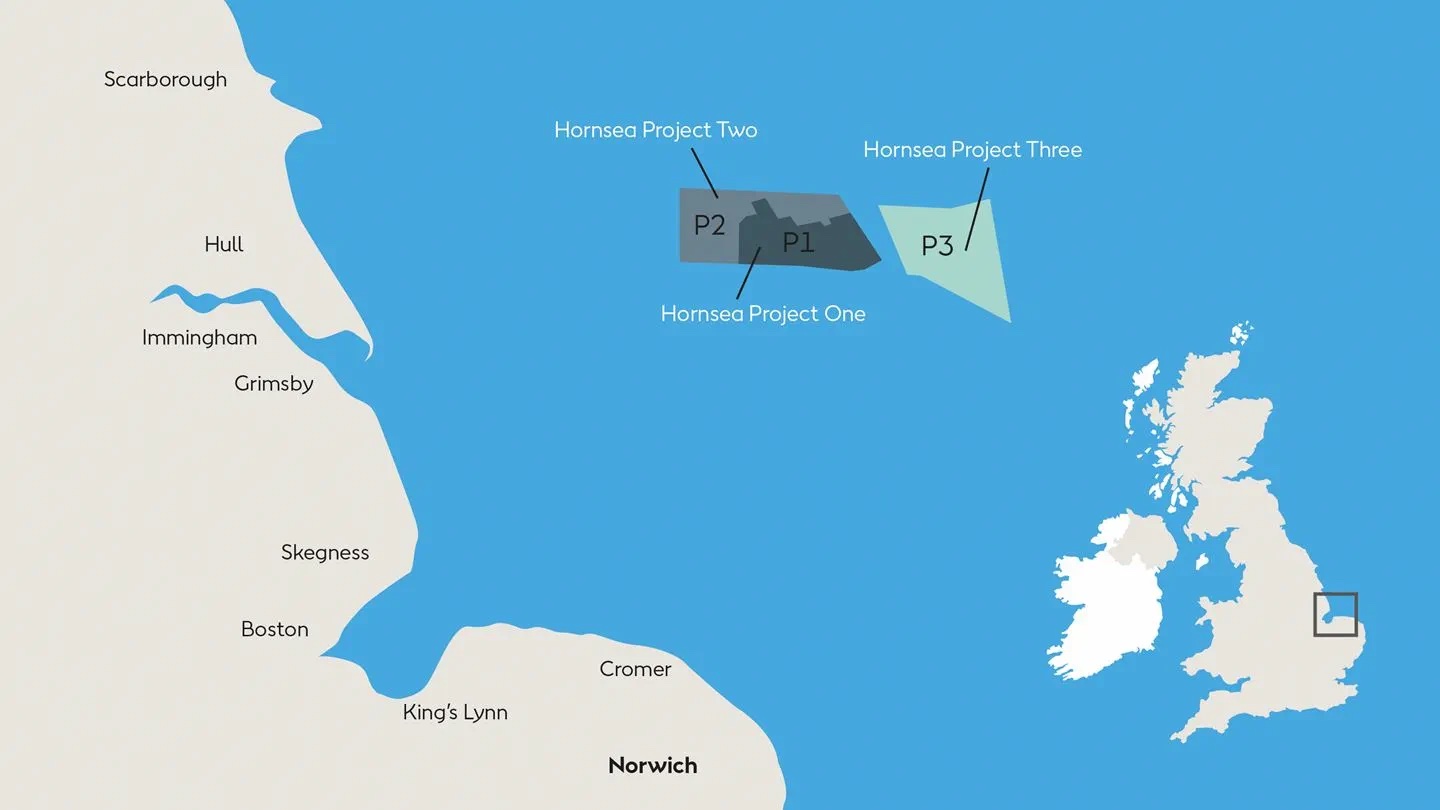
(Source: Shutterstock.com)
Renewable energy developer Ørsted said Dec. 20 it has taken a final investment decision (FID) on the 2.9-gigawatt (GW) Hornsea 3 wind farm, which will be capable of producing enough electricity to power more than 3.3 million U.K. homes.
When complete, Hornsea 3 will become the world’s largest offshore wind farm. Commissioning is expected around year-end 2027, Ørsted said.
Located in the North Sea, Hornsea 3 is part of a more than 5-GW wind farm trio that includes the 1.2-GW Hornsea 1 and 1.3-GW Hornsea 2—both of which are operating. The offshore wind farm cluster could also include the up to 2.6-GW Hornsea 4, which would lift the cluster’s capacity to about 8 GW.
“By applying our world-leading capabilities within offshore wind innovation, engineering, operations, procurement and financing, we’ve been able to mature the world’s largest offshore wind project and take final investment decision,” said Ørsted CEO Mads Nipper. “Offshore wind is an extremely competitive global market, so we also welcome the attractive policy regime in the U.K. which has helped secure this investment.

The FID comes as the U.K. continues to push toward a goal of deploying up to 50 GW of offshore wind capacity by 2030. However, the offshore wind sector has faced challenges, including rising costs that have prompted some developers to cancel projects.
Ørsted called Hornsea 3’s risk-reward profile “robust,” given the “well-established supply chain and synergies” with Hornsea 1 and Hornsea 2.
“Most of the capital expenditure for Hornsea 3 was contracted ahead of recent inflationary pressures, securing competitive prices from the supply chain and allowing time to work collaboratively on value creation opportunities,” Ørsted said in a press release.
All major contracts for the project have been secured, including a deal with Siemens Gamesa for SG 14-236 DD offshore wind turbines. “The larger wind turbines and the synergies with Hornsea 1 and 2 lead to lower operating costs than we have seen before in our portfolio,” the company said.
Recommended Reading
Petro-Victory Buys Oil Fields in Brazil’s Potiguar Basin
2025-02-10 - Petro-Victory Energy is growing its footprint in Brazil’s onshore Potiguar Basin with 13 new blocks, the company said Feb. 10.
VAALCO Acquires 70% Interest in Offshore Côte D’Ivoire Block
2025-03-03 - Vaalco Energy announced a farm-in of CI-705 Block offshore West Africa, which it will operate under the terms of an acquisition agreement.
Hart Energy Acquired by Crain Communications Inc.
2025-02-10 - Hart Energy has been acquired by privately held publisher Crain Communications Inc.
TotalEnergies Sells Half of UK Gas Power Plant to Subsidiary of EPH
2024-12-16 - TotalEnergies acquired the power plant, called West Burton Energy, for US$473.4 million in June.
Shell Completes Deal to Buy Power Plant in Rhode Island
2025-01-24 - Shell has completed its previously announced acquisition to buy a 609-megawatt combined cycle gas turbine power plant in Rhode Island from RISEC Holdings.
Comments
Add new comment
This conversation is moderated according to Hart Energy community rules. Please read the rules before joining the discussion. If you’re experiencing any technical problems, please contact our customer care team.






